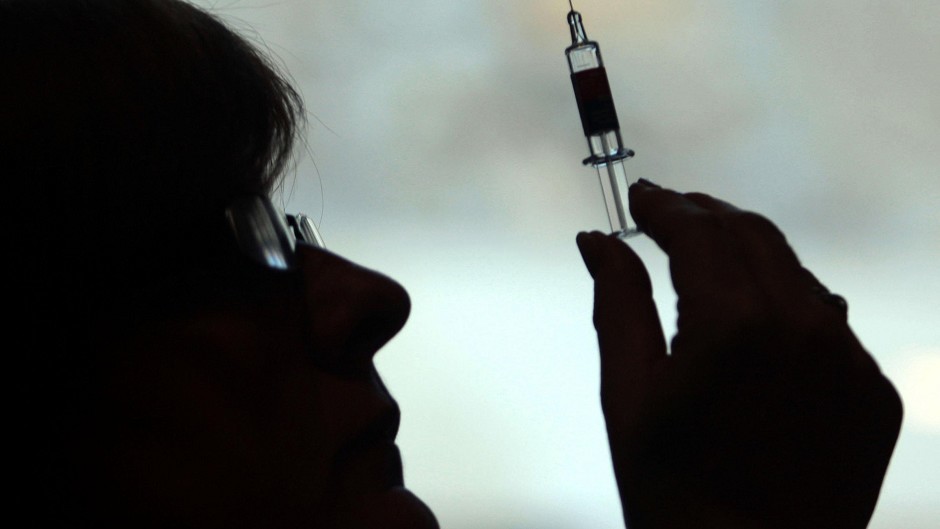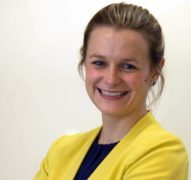I’m eight and hiding under a chair in our doctor’s surgery, refusing to come out.
My younger sister, always much braver than me, tells me the injections don’t hurt, but it doesn’t make a difference, I won’t budge.
Eventually my mum has to haul me up and hold me down while the needles go in.
Twenty-six years later and the boot’s on the other foot.
I’m back in the surgery, only this time I’m the grown-up, trying to keep my daughter’s leg still as the nurse pricks her – not once, not twice, but four times.
Maya barely batted an eyelid when she had her eight, 12 and 16 week vaccinations.
At a year, she’s much more aware of the pain, however.
And as she screams and writhes around like a wounded animal, as I realise how hard it is to watch my child in that state, I make a mental note to apologise to my mum.
Because my behaviour must have made what is already a horrendous experience even worse.
I still hate jabs and don’t think I’ll ever manage to get past the nervous sick feeling that engulfs me in the lead-up to having them.
But of course, while puncturing a tiny limb with a huge needle multiple times seems barbaric, I’m sensible enough to appreciate their vital importance and how lucky we are to live in a country where the drugs are easily accessible and free.
In the same way my eight-year-old self would have been at risk had I not being vaccinated against yellow fever and typhoid ahead of our move to Kenya, to deny Maya would have left her exposed.
And that would have been a total dereliction of my responsibility as a parent, as well as to wider society.
Sadly, not everyone agrees, and in recent years there has been growing concern about the spread of anti-vaccine messages, to the extent that the World Health Organization (WHO) has included so-called vaccine hesitancy on its list of 10 global health threats for 2019.
The reluctance or refusal to vaccinate despite the availability of vaccines, resulting in declining immunisation rates, it can be attributed to a number of factors, including religious beliefs and safety concerns, such as the now widely disproven claim that inoculations cause autism.
In addition, academics have identified rising populism across the US and Europe as contributing to a new wave of anti-vaccine mistrust in the establishment.
But perhaps most relevant to the UK is complacency, namely an assumption by the authorities that people will follow advice, despite conflicting messages on social media.
Worryingly, last autumn, data showed that mumps, measles and rubella (MMR) coverage for children in England reaching their second birthday had dropped to a six-year low.
And in August, the Press and Journal revealed that NHS Grampian had brought in dedicated immunisation specialists after vaccination rates plummeted.
Faced with outbreaks, one option is compulsory vaccination for children.
This week, after months of debate and amid a measles surge, Italian pupils were told not to come to school unless they can prove they have received a range of mandatory immunisations.
While only children under six can be turned away, under the new regime, parents face fines of up to €500 (£425) if they send their unvaccinated children to school.
Health minister Giulia Grillo said the rule was now simple: “No vaccine, no school”.
The move follows similar approaches in Germany and France and seems to have been successful in that figures released on the last day for parents to provide documentation show a national immunisation rate at, or very close to, 95% for 2015 babies, depending on the particular vaccine being discussed.
I’m not sure forcing parents’ hands is the best solution in the long-term, however.
This method risks making the most entrenched views even more so and there’s also a danger it may result in some children getting caught up in damaging disputes between their parents and teachers.
What if a parent chooses to send their child to school regardless and pay the fine for instance? How do you enforce one when a parent cannot or refuses pay it?
I understand the state’s rationale for stepping in. It has a duty to protect its citizens during a public health crisis.
But this process shouldn’t be about dictating to parents.
Our priority instead has to be putting a stop to the spread of misinformation masquerading as science, thus empowering people to make an educated decision.
To that end, FaceBook’s announcement earlier this month that it will no longer allow anti-vaccine content to be promoted through adverts or recommendations was welcome, if overdue.
Coupled with a visible positive campaign about the benefits of vaccines, this is a good starting point.
Whatever the tactic though, we can’t afford to delay.
Because below the threshold of herd immunity – when enough of the population is vaccinated for the spread of the disease to become unlikely – babies too young to be vaccinated or those with weaker immune systems are left vulnerable.
And for me this is the key point.
Those who insist against vaccination are not just doing their own children a disservice, they are endangering us all.
None of us lives in a vacuum.
We need to be aware that our actions affect others, in this case with potentially devastating consequences.
Lindsay Razaq is a journalist and former P&J Westminster political correspondent who now combines freelance writing with being a first-time mum

